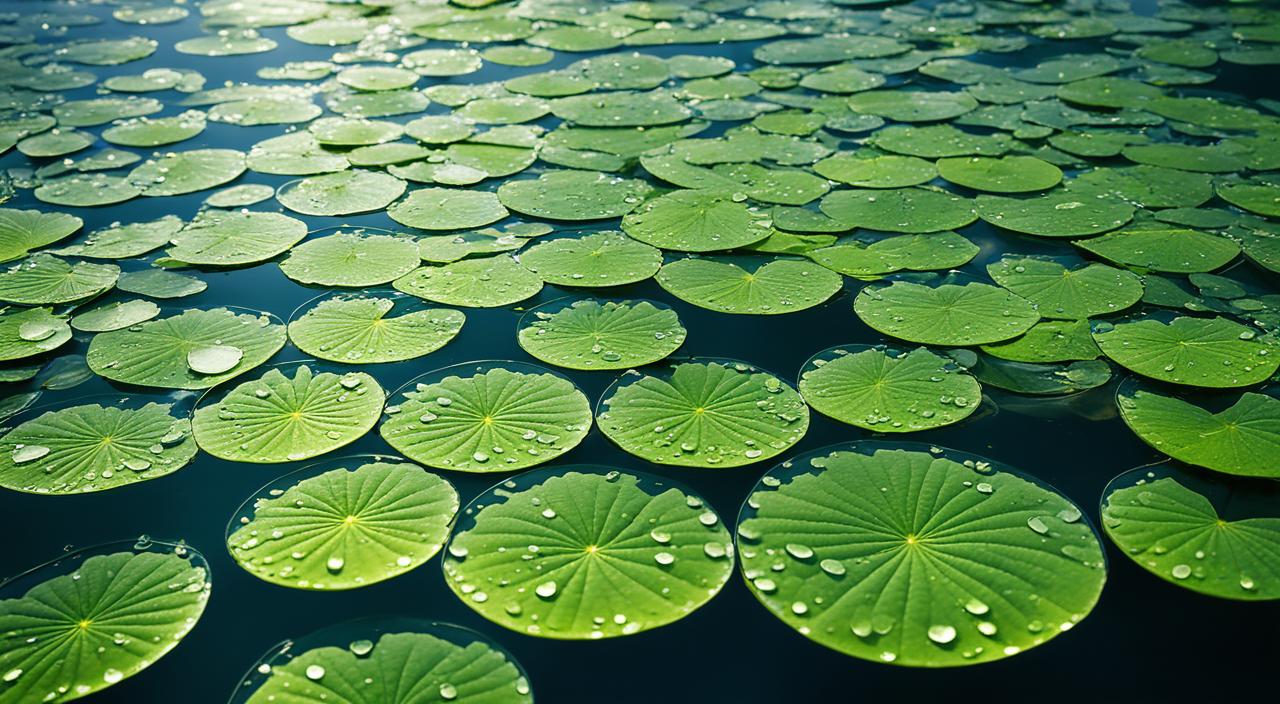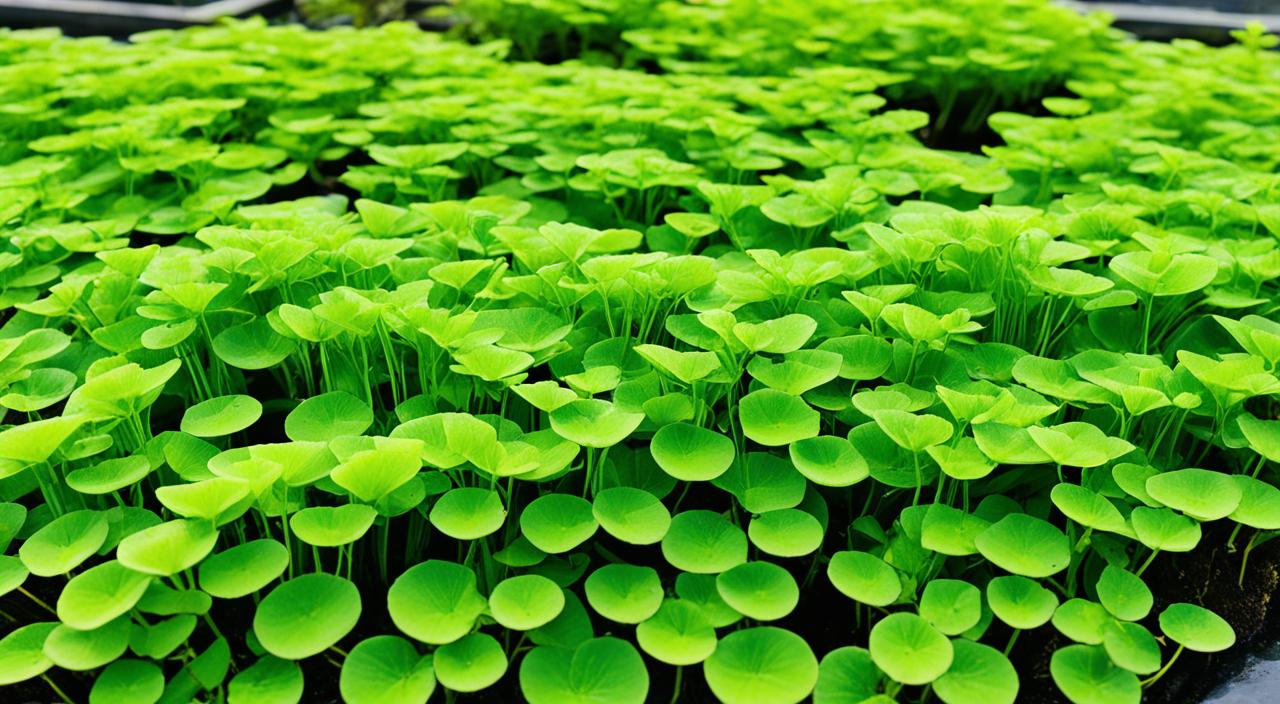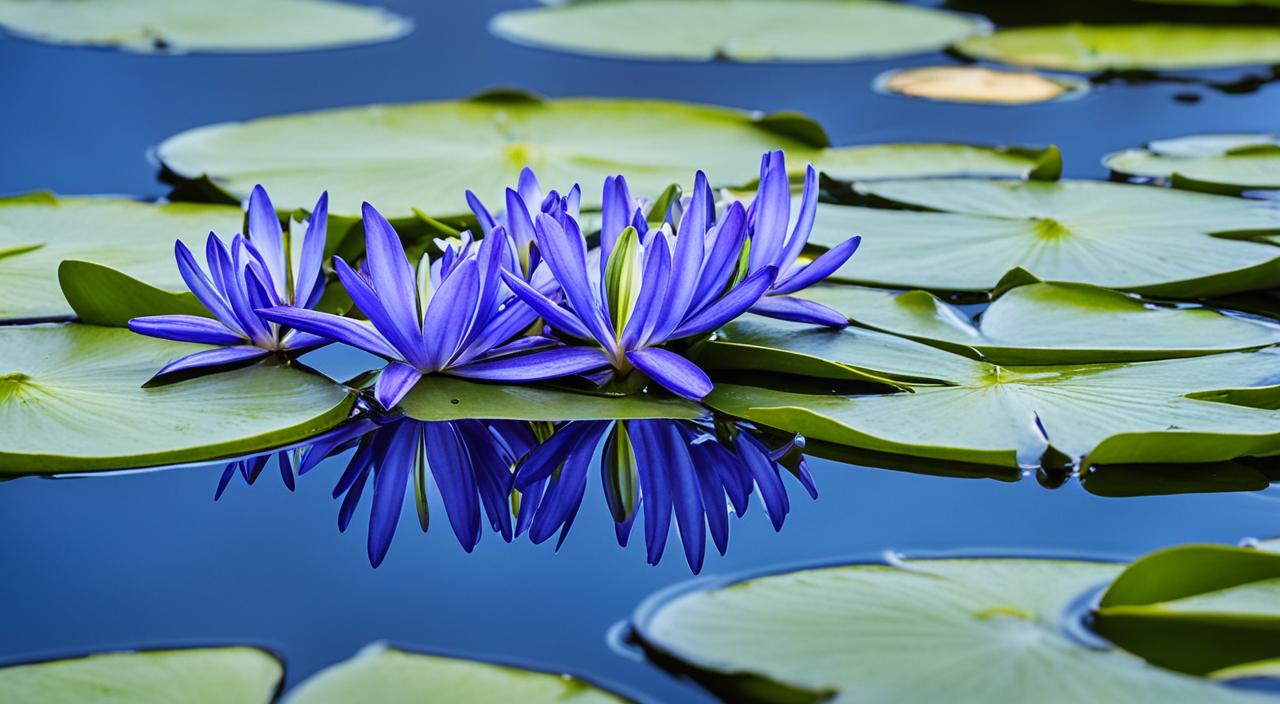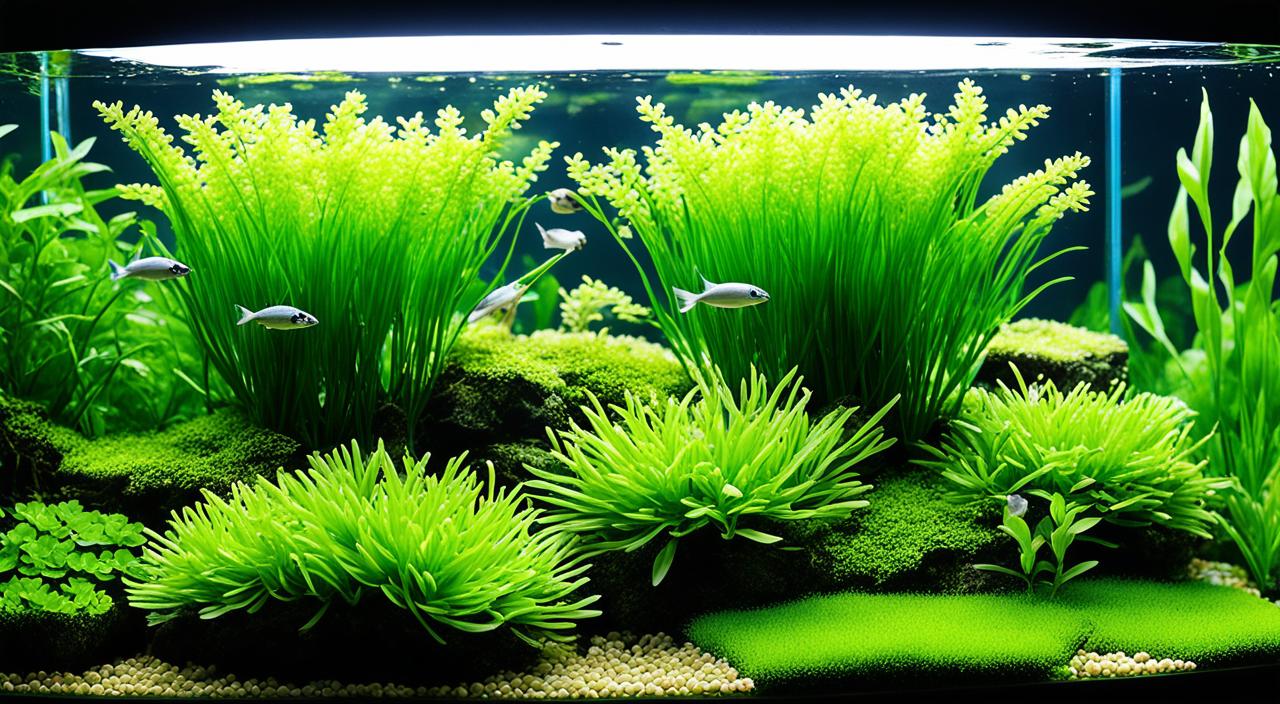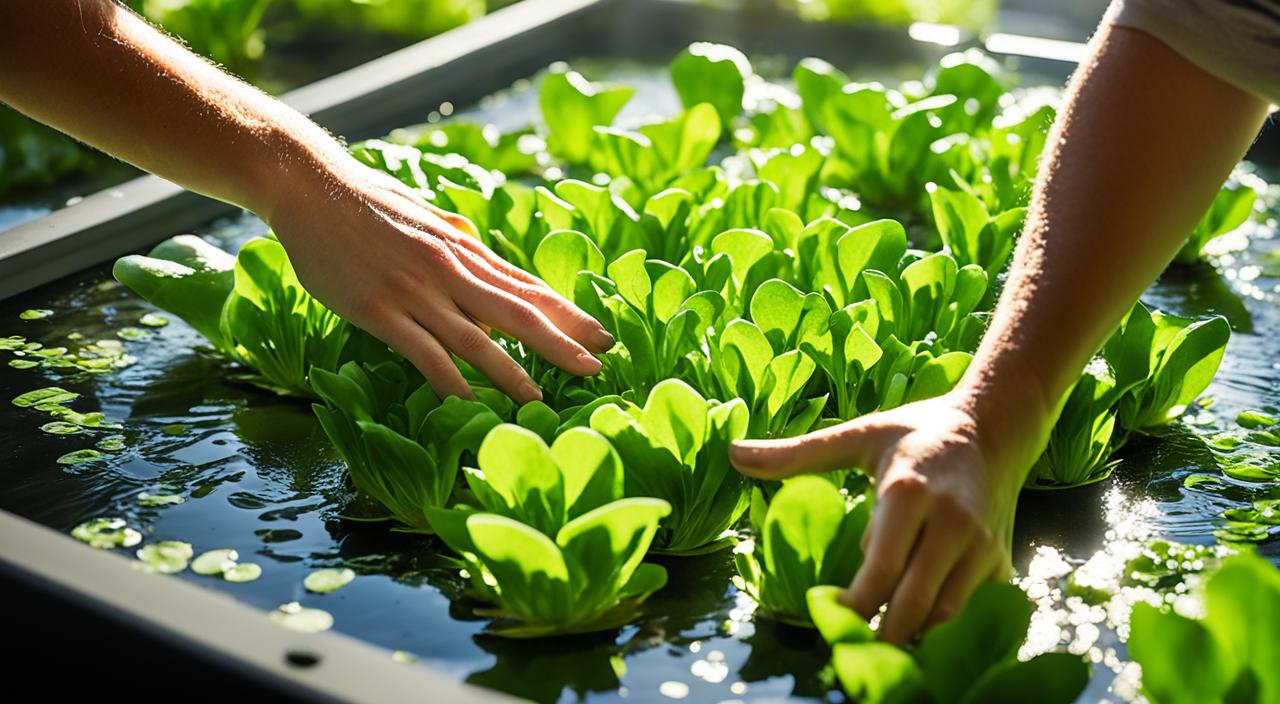Hello, my name is Andrea, and today, I want to introduce you to an exquisite aquatic plant that will transform your aquarium into a mesmerizing underwater landscape. Meet Water Spangles, scientifically known as Salvinia cucullata. These floating aquarium plants are visually stunning and incredibly low-maintenance, making them a perfect choice for beginners and experienced aquarists.
Water Spangles, with their vibrant green leaves and delicate roots that dangle beneath the water’s surface, add a natural beauty to any aquarium. Not only do they enhance the aesthetic appeal, but they also bring numerous benefits to the aquatic ecosystem. As floating plants, Water Spangles create shade that helps inhibit unwanted algae growth. Additionally, they absorb excess nutrients, acting as a natural water filtration system.
Throughout this comprehensive guide, I’ll provide detailed information on Salvinia cucullata, including its origins, habitat, morphological characteristics, and care requirements. By the end, you’ll have all the knowledge you need to cultivate Water Spangles in your aquarium. Let’s dive in!
Brief Overview Of Water Spangles (Salvinia cucullata)
This section briefly overviews Water Spangles (Salvinia cucullata), a famous floating aquarium plant. Water Spangles are known for their unique floating nature, making them a fantastic addition to any aquarium. These plants offer numerous aesthetic and functional benefits, enhancing your tank’s overall appearance and ecosystem.
One of the critical advantages of Water Spangles is their ability to provide shade to the aquarium. The floating leaves create a natural canopy, reducing light penetration and helping to inhibit the growth of algae. This shade also provides a comfortable environment for fish and other aquatic organisms, mimicking their natural habitat.
| Characteristic | Description |
|---|---|
| Scientific Name | Salvinia cucullata |
| Common Names | Water Spangles, Asian Watermoss |
| Origin | Southeast Asia |
| Height | Floats on water surface; fronds up to 2 cm |
| Growth Rate | Fast |
| Colour | Green, with a velvety appearance |
| Aquarium Placement | Water surface |
| Water Type | Freshwater |
| pH | 6.0 – 8.0 |
| Care Level | Easy |
| Light Requirements | Moderate to high; 50-70 PAR is ideal. Prefers 6500K-7000K for optimal growth and health. |
| CO2 Requirements | Not necessary, but can benefit from CO2 supplementation |
| Temperature | 18°C – 30°C (64°F – 86°F) |
| Flow Rate | Low to moderate; prefers still water or gentle flow |
| Propagation | Vegetative, through division of daughter plants |
| Feed Type | Vegetative, through the division of daughter plants |
Regarding light requirements, Water Spangles (Salvinia cucullata) are pretty adaptable but thrive best under moderate to high lighting conditions. A PAR (Photosynthetically Active Radiation) value of 50-70 is generally sufficient for healthy growth. The ideal colour temperature for promoting vigorous growth and maintaining the plant’s health is between 6500K and 7000K, which simulates natural daylight conditions. This light spectrum encourages photosynthesis and helps keep the vibrant green colour of the fronds. While Salvinia cucullata does not have strict LUX requirements, providing a well-lit environment without direct sunlight can prevent issues like algae growth on the leaves.
In addition to providing shade, Water Spangles play a crucial role in water filtration. The plant’s delicate roots absorb excess nutrients from the water, helping to prevent the accumulation of harmful substances and promoting cleaner and healthier water conditions. This natural filtration process can contribute to the overall well-being of the aquarium and its inhabitants.
When it comes to care requirements, Water Spangles are relatively low-maintenance. They thrive in moderate to high light conditions, so providing adequate lighting to support their growth is essential. Regarding water quality, these plants prefer clean water with stable parameters. Regular water testing and maintenance are necessary to ensure optimal conditions for their well-being.
Overall, Water Spangles are visually appealing and provide practical benefits to your aquarium. Whether a beginner or an experienced hobbyist, these floating aquatic plants offer an excellent addition to your underwater world.
Origins And Habitat
Water Spangles (Salvinia cucullata) is native to South America, particularly regions like Brazil, Argentina, and Uruguay. It is a tropical plant that thrives in warm climates. In their natural habitat, water spangles can be found floating on the surfaces of freshwater bodies such as ponds, lakes, and slow-moving streams. It prefers calm, still waters with minimal water movement.
Morphological Characteristics
Water spangles (Salvinia cucullata) have distinctive morphological characteristics that make them easily recognizable. The plant has small oval-shaped leaves covered in tiny hairs that create a velvety texture. These leaves are arranged in pairs and float on the water’s surface. The roots of Water Spangles hang beneath the water, providing anchorage and absorbing nutrients.
Placement And Lighting
When placing Water Spangles in your aquarium, it is vital to consider its floating nature. This plant should float freely on the water’s surface, where it can receive ample light and access to carbon dioxide (CO2) from the air.
Water Spangles require moderate to high light intensity to thrive, so providing adequate lighting for their growth is essential. Ensuring that your aquarium has proper lighting will help promote the healthy development of Water Spangles and enhance their vibrant green colour.
Placing the plants in a well-lit area can create a visually stunning display in your aquarium while also fulfilling the light requirements of Water Spangles. This can be achieved by using aquarium lights designed explicitly for freshwater plants or by positioning the tank near a natural light source, such as a window.
Remember that each aquarium setup is unique, so it is essential to observe how your Water Spangles respond to the lighting conditions provided. Adjustments may be necessary to achieve the optimal light intensity and duration balance for your specific aquarium. Regularly monitor the plants and modify them to ensure their healthy growth.
What Are Good Tank Mates?
Water Spangles (Salvinia cucullata) can coexist peacefully with various fish species. When choosing tank mates for Water Spangles, selecting fish that will not disturb the floating plants and can benefit from the shade and shelter they provide is essential. Here are some excellent tank mates that are compatible with Water Spangles:
Good Tank Mates
- Tetras
- Guppies
- Rasboras
These peaceful community fish are excellent choices as tank mates for Water Spangles. They will not uproot or damage the plants and can thrive in the same aquarium environment.
Fish Species To Avoid
While Water Spangles can peacefully coexist with many fish species, certain fish should be avoided when keeping this floating plant. It’s best to steer clear of herbivorous or aggressive fish that may cause harm to the plants. Here are some fish species to avoid:
- Goldfish (Carassius auratus)
- Siamese Fighting Fish (Betta splendens)
- Cichlids
- Plecos
These fish species tend to uproot or damage aquatic plants, including Water Spangles. To ensure the well-being of your floating plants, it’s best to avoid keeping them with these fish.
Feeding (Fertilization)
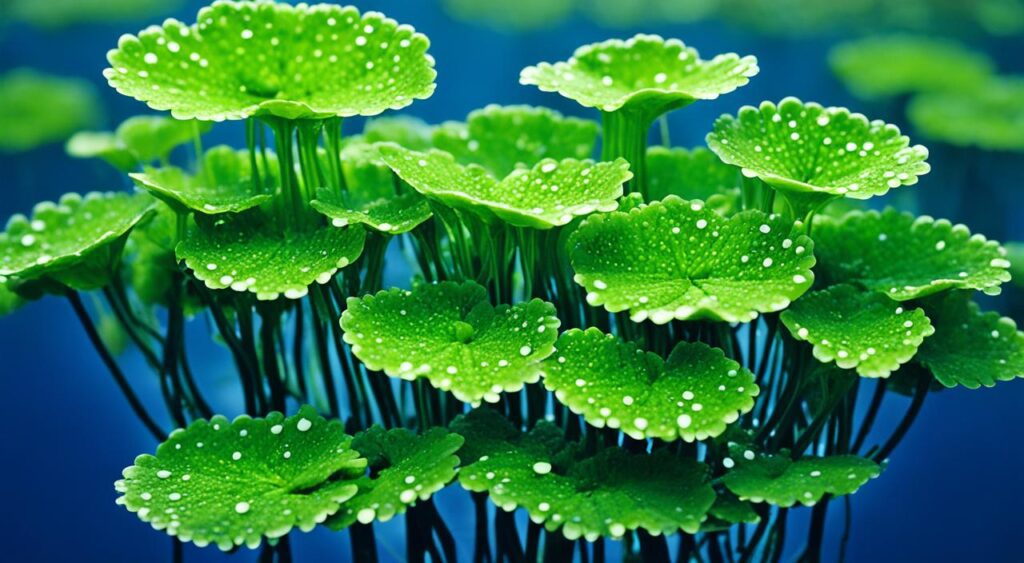
How Much And How Often To Feed
Water Spangles (Salvinia cucullata) primarily obtain nutrients from the water column and through its floating roots. However, you can supplement the plant’s nutrient intake by adding liquid or root tab fertilizers to promote faster growth and ensure optimal health.
Feeding Water Spangles requires a carefully planned schedule to provide the appropriate fertilizers. The feeding frequency and quantity depend on your aquarium’s specific needs and the growth rate of water spangles. It’s essential to avoid overfeeding, as excessive nutrient levels can lead to algae proliferation.
When adding liquid fertilizers, follow the manufacturer’s instructions for dosing recommendations. Generally, a weekly or bi-weekly application is sufficient. However, monitor the growth of your Water Spangles to assess if adjustments to the feeding schedule are necessary.
If using root tabs, place them strategically near the roots of Water Spangles. This ensures direct nutrient absorption by the floating plant. The frequency of root tab application typically ranges from every 2-6 months, depending on your aquarium’s specific product and nutrient requirements. Again, closely observe the growth and health of your Water Spangles to determine the most effective feeding schedule.
Regularly monitor the nutrient levels in your aquarium water through appropriate testing methods. This allows you to make informed decisions about adjusting the feeding schedule or the amount of fertilizers added.
CO2 Injection
Types
Supplementing carbon dioxide (CO2) in your aquarium can enhance the growth of Water Spangles (Salvinia cucullata) and promote healthier plants. While these floating aquatic plants can obtain CO2 from the air, additional supplementation can have significant benefits. Various types of CO2 injection methods are available, each with advantages and considerations.
1. DIY Yeast CO2 Setups: A standard and cost-effective option is a DIY yeast CO2 setup. This method involves creating a simple system that utilizes yeast, sugar, and water to produce CO2. The yeast ferments the sugar, releasing CO2 as a byproduct. This CO2 is then diffused into the aquarium water, providing a source for the Water Spangles to utilize for photosynthesis.
2. Pressurized CO2 Systems: Pressurized CO2 systems offer a more controlled and efficient method of supplementing CO2. These systems involve using a CO2 cylinder or canister connected to a regulator and diffuser. The regulator allows for precise control of the CO2 flow rate, while the diffuser ensures even distribution of CO2 into the aquarium water. Pressurized CO2 systems suit larger aquariums or those seeking more consistent and stable CO2 levels.
When choosing between these CO2 injection methods, consider factors such as the size of your aquarium, the desired level of control, and your budget. It’s vital to monitor CO2 levels and make adjustments to prevent over- or under-dosing, as this can impact the health of your Water Spangles and other aquatic life in the tank.
Care
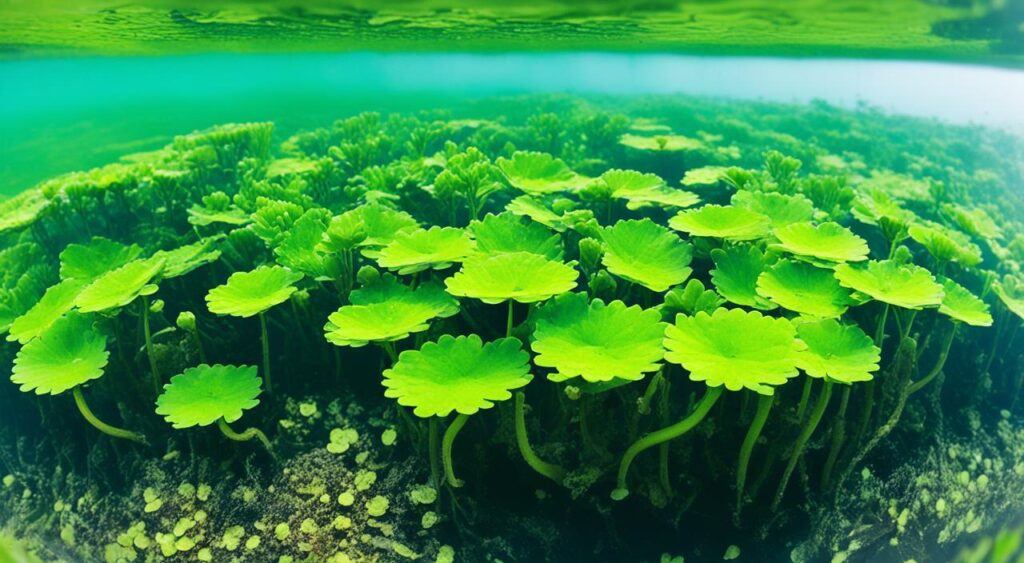
Proper care is essential for the health and well-being of Water Spangles (Salvinia cucullata) in your aquarium. This section will discuss various aspects of caring for Water Spangles, including the ideal water parameters, water quality maintenance, filtration systems, and flow requirements.
Planted Tank Parameters
Creating and maintaining the correct water parameters is crucial for Water Spangles’ optimal growth and well-being. These floating aquatic plants thrive in temperatures between 72°F and 82°F (22°C to 28°C). They prefer slightly acidic to neutral pH levels, ranging from 6.0 to 7.5. The water hardness should also be kept within a moderate range of 4 to 8 dGH. These parameters will help provide a suitable environment for the healthy growth of Water Spangles.
Water Quality
Maintaining good water quality is essential for your aquarium’s overall health and Water Spangles’ well-being. Regular water changes, typically around 10 to 20% every one to two weeks, will help remove excess nutrients and maintain proper water chemistry. It’s essential to use a de-chlorinator to treat tap water before adding it to your aquarium and monitor water parameters regularly using appropriate test kits to ensure they remain within the desired range.
Filtration
Proper filtration is crucial to keep the aquarium environment clean and debris-free. Mechanical, biological, and chemical filtration is recommended to maintain water quality. Consider using a mechanical and biological filtration filter, such as a hang-on-back (HOB) or canister filter, to remove impurities and promote beneficial bacteria growth. Additionally, using activated carbon or other chemical filter media can help remove excess nutrients from the water.
Flow
Water Spangles prefer calm, still waters with minimal water movement. Excessive flow can disrupt the floating nature of the plants and may hinder their growth. Adjust the flow rate of your filtration system or use flow diffusers to reduce water movement near the Water Spangles. Maintaining a gentle flow will ensure the plants can absorb nutrients and carbon dioxide effectively while providing a serene environment for your aquarium inhabitants.
| Parameter | Ideal Range |
|---|---|
| Temperature | 72°F – 82°F (22°C – 28°C) |
| pH | 6.0 – 7.5 |
| Water Hardness (dGH) | 4 – 8 |
Aquarium Maintenance
Testing Water Conditions
Testing the water conditions in your aquarium is essential for the health and well-being of Water Spangles (Salvinia cucullata). Regular testing allows you to monitor crucial parameters such as pH, ammonia, nitrite, and nitrate levels. These tests help ensure that the water is within the optimal range for the growth and development of Water Spangles.
Testing the water parameters at least once a week or after any significant changes in your tank is recommended. Testing kits are readily available in pet stores and online, providing an easy and reliable way to assess water quality. Follow the instructions provided with the testing kit to obtain accurate results.
An ideal range for water conditions for Water Spangles is a pH level between 6.5 and 7.5, ammonia and nitrite levels at zero, and nitrate levels below 20 ppm. Maintaining these parameters will promote the health and vitality of your Water Spangles.
How To Set Up Your Aquarium Tank
Setting up your aquarium tank correctly is crucial for providing an optimal environment for Water Spangles. Follow these steps to ensure a successful setup:
- Thoroughly clean the tank and rinse off any dust or debris.
- Add a suitable substrate to the bottom of the tank.
- Install the necessary equipment, such as a heater, filter, and lighting.
- Fill the tank with water, treating it with a dechlorinator to remove harmful chemicals.
- Cycle the tank to establish beneficial bacteria that will help maintain water quality.
- Introduce water Sponges by gently placing them on the surface of the water.
- Monitor the tank closely during the initial weeks to ensure stable water conditions.
Proper aquarium setup will provide the right conditions for Water Spangles to thrive and contribute to a healthy ecosystem within your tank.
Propagation Methods
Propagating Water Spangles is a rewarding way to expand your collection and fill out your aquarium. There are several methods you can use to propagate Water Spangles:
- Division: Gently separate the plant into smaller clusters, ensuring each cluster has enough leaves and roots. These clusters can then be placed in different areas of the tank.
- Runners: Water Spangles produce runners that extend horizontally along the water’s surface. When these runners develop roots, you can separate them from the main plant and relocate them to new tank areas.
- Reproduction: Water Spangles can produce tiny spores that develop into new plants. These spores can be collected and placed in a separate container until they grow into mature plants.
Using these propagation methods, you can create a lush and vibrant display of Water Spangles in your aquarium.
Health And Disease
Maintaining the health of water spangles (Salvinia cucullata) is vital to their longevity and beauty in your aquarium. This section will cover signs of good health for the plant, such as vibrant colour, robust growth, and healthy roots. We will also discuss signs of poor health, including yellowing leaves, stunted growth, and decaying roots. Additionally, we will explore common health issues that Water Spangles may encounter and recommend treatments. Finally, we will touch upon potential plant pests that can affect the well-being of Water Spangles and methods to control or prevent infestations.
Summary
Throughout this comprehensive guide, we have delved into the world of Water Spangles (Salvinia cucullata), a stunning floating aquatic plant for aquarium enthusiasts. Starting with its origins in South America, particularly Brazil, Argentina, and Uruguay, we explored its natural habitat of calm freshwater bodies like ponds, lakes, and slow-moving streams.
We then discussed the morphological characteristics that make Water Spangles easily recognizable, including its vibrant green oval-shaped leaves arranged in pairs and velvety texture created by tiny hairs. This plant’s floating nature and ability to absorb excess nutrients and provide shade make it an ideal addition to any aquarium ecosystem, contributing to natural water filtration and inhibiting algae growth.
By understanding the care requirements of Water Spangles, including proper placement and lighting, compatible tank mates, feeding and fertilization, CO2 supplementation, and maintaining water quality and filtration, you can create an optimal environment for its growth. Additionally, we covered essential aspects of aquarium maintenance, such as testing water conditions, setting up your tank, and methods for propagating Water Spangles.
This summary gives you a comprehensive overview of Water Spangles (Salvinia cucullata) and the critical points discussed in this guide. Armed with this knowledge, you have the tools to cultivate and care for this beautiful aquatic plant, adding both aesthetic appeal and environmental benefits to your aquarium.
FAQ
What are the benefits of Water Spangles in an aquarium?
Water Spangles provide natural water filtration benefits by absorbing excess nutrients and shading the aquarium, inhibiting the growth of algae. They also add beauty and visual appeal to the aquarium.
Where is Water Spangles (Salvinia cucullata) native to?
Water Spangles is native to South America, particularly regions like Brazil, Argentina, and Uruguay.
How do I care for Water Spangles in my aquarium?
Water Spangles require moderate to high light intensity and should be allowed to float freely on the water’s surface. You can supplement their nutrient intake with liquid or root tab fertilizers, and it’s important to maintain proper water parameters and adequate filtration.
What are the ideal tank mates for Water Spangles?
Good tank mates for Water Spangles include peaceful community fish such as tetras, guppies, and rasboras. However, herbivorous or aggressive fish should be avoided as they may damage the plants.
How often should I feed Water Spangles?
Water Spangles primarily obtain nutrients from the water column. While they can survive with minimal feeding, supplementing their nutrient intake with liquid or root tab fertilizers can promote faster growth. Follow a feeding schedule and provide the appropriate amount of fertilizers based on your aquarium’s specific needs and the growth rate of Water Spangles.
Should I supplement carbon dioxide (CO2) for Water Spangles?
While Water Spangles can obtain CO2 from the air, supplementing it in your aquarium can promote faster and healthier growth. Various types of CO2 injection methods are available, and the choice depends on factors such as the size of the aquarium and the level of control desired.
What are the care requirements for Water Spangles?
Water Spangles prefer moderate to high light intensity and require a suitable water temperature, pH, and hardness. Regular water changes and proper filtration are essential for maintaining water quality. Adequate flow rate is also important for optimal growth and oxygenation.
How do I set up my aquarium tank for Water Spangles?
When setting up your tank for Water Spangles, provide them with ample space to float on the water’s surface. Ensure the lighting is suitable for their growth and maintain the desired water parameters. Additionally, you can propagate Water Spangles by dividing and replanting the new growth.
What signs indicate good health in Water Spangles?
Vibrant color, robust growth, and healthy roots are signs of good health in Water Spangles.
What are common health issues that can affect Water Spangles?
Water Spangles can face issues such as yellowing leaves, stunted growth, decaying roots, and potential plant pest infestations. It’s important to address these issues promptly and provide appropriate treatments.
What is a summary of Water Spangles (Salvinia cucullata) for aquarium enthusiasts?
Water Spangles is a popular floating aquatic plant that adds beauty and functionality to aquariums. It provides natural water filtration benefits, requires moderate to high light intensity, and can coexist peacefully with various fish species. Proper care, including suitable water parameters and regular maintenance, is essential for its health and longevity.

